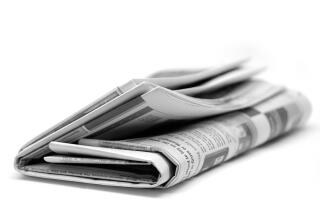Reporting on U.S.-Japan Trade Termed Balanced
HONOLULU — A recent study of more than 1,000 articles in leading American and Japanese newspapers concluded that press coverage of bilateral trade issues is on the whole balanced and objective.
But scholars, government officials and journalists attending a conference on media coverage of trade friction between Japan and America last week in Honolulu argued that negative images and exaggerated reporting continue to haunt the relationship between the two countries.
The study, sponsored by the Mansfield Center for Pacific Affairs and the Dentsu Institute for Human Studies, the two conference hosts, involved content analysis of articles covering three acrimonious issues:
* Japanese corporate acquisitions of Columbia Pictures and the Rockefeller Center in New York.
* Negotiations on the Strategic Impediments Initiative--an effort to make fundamental changes in elements of the American and Japanese economies that obstruct trade.
* Talks over joint development of the FSX, a new generation fighter plane.
Of the five American newspapers examined, the Los Angeles Times had the most extensive coverage of the issues, with 167 articles over a period of roughly one year beginning in late 1989. The New York Times had 126 articles, while the Washington Post had 87.
The study found that some articles contained bias and estimated that one in 10 articles published in each country contained negative images of the other side.
“Americans were pictured as arrogant, emotional and extravagant people in economic decline and taking out their frustrations on the Japanese,” according to the report. “Japanese were pictured as an insular, opportunistic and treacherous people.”
American articles tended to be equally critical of both Japan and America, while Japanese articles tended to focus criticism on America. The report found that American articles also tended to be longer and more in-depth, giving arguments from both sides, while Japanese articles tended to be purely descriptive, leaving out arguments altogether.
In conference discussions, Hideo Takeichi, a journalism professor at Sophia University, castigated American reporters for using terms of war to describe trade relations, singling out Newsweek’s “Japan Invades Hollywood” cover that followed Sony’s acquisition of Columbia Pictures in 1989.
The harshest criticism, however, was reserved for the Japanese press. Japanese newspapers have 237 correspondents in America, more than three times the 70 correspondents American papers have in Japan, reflecting a Japanese obsession with America’s view of Japan.
But many conference participants expressed concern that Japanese reporters exaggerated the extent of Japan bashing in America by foraging around for anti-Japanese sentiment.
Glen Fukushima, a former official with the U.S. trade representative’s office, recalls Japanese reporters asking him two years ago “what nasty things America had prepared for Japan” for the 50th anniversary of Pearl Harbor, which comes this December. By repeating the same question to anti-Japanese congressmen, said Fukushima, reporters were virtually goading them into taking some kind of action.
Japanese reporters also make relations with Americans appear worse by giving extensive play to events of little significance. Ayako Doi, editor of Japan Digest, a newsletter, recalled helping Japan’s public television station, NHK, cover a congressional hearing at which T. Boone Pickens was criticizing Japan. Half a dozen television cameras showed up from Japan, and the hearing led the news there. The event wasn’t even covered on American television, Doi said.
American reporters argued, for the most part, that problems between the two countries reflected real differences in the way Japan and America look at the world. The problems also reflected Japan’s failure to create a more positive image through television.
“Japan missed an opportunity to have a strong image, one picture of a Japanese doctor saving an American soldier or a Kurd child,” said Cokie Roberts, Washington correspondent for National Public Radio. In the absence of other strong images, she said, the primary image of Japan likely to emerge this year will be “the powerful shot of the bombing of Pearl Harbor.”
John Dower, professor of history at UC San Diego, argued that America’s image of Japanese depicted in the press and in political cartoons since World War II--first as apes, then as “little men in little cars”--led America to repeatedly underestimate the nation’s capability. Now, he said, America is in danger of overestimating Japan’s capabilities by picturing it as a giant or superman, often using the image of a giant sumo wrestler next to a frail Uncle Sam.
Adding a new twist to the analysis of bilateral ties was dream analyst Robert E. Bosnak, who suggested that trade problems were aggravated by America’s collective subconscious. Americans were projecting onto Japan the dark side of Mercury, the god of trade, an image that he said was “woven into Western culture and consciousness.” The dark side of the god of trade, he said, has been historically pictured as “sleazy, small, deceptive, tricky and androgynous. He has no principles and has a horde of hard-working dwarfs.”
More to Read
Sign up for Essential California
The most important California stories and recommendations in your inbox every morning.
You may occasionally receive promotional content from the Los Angeles Times.










